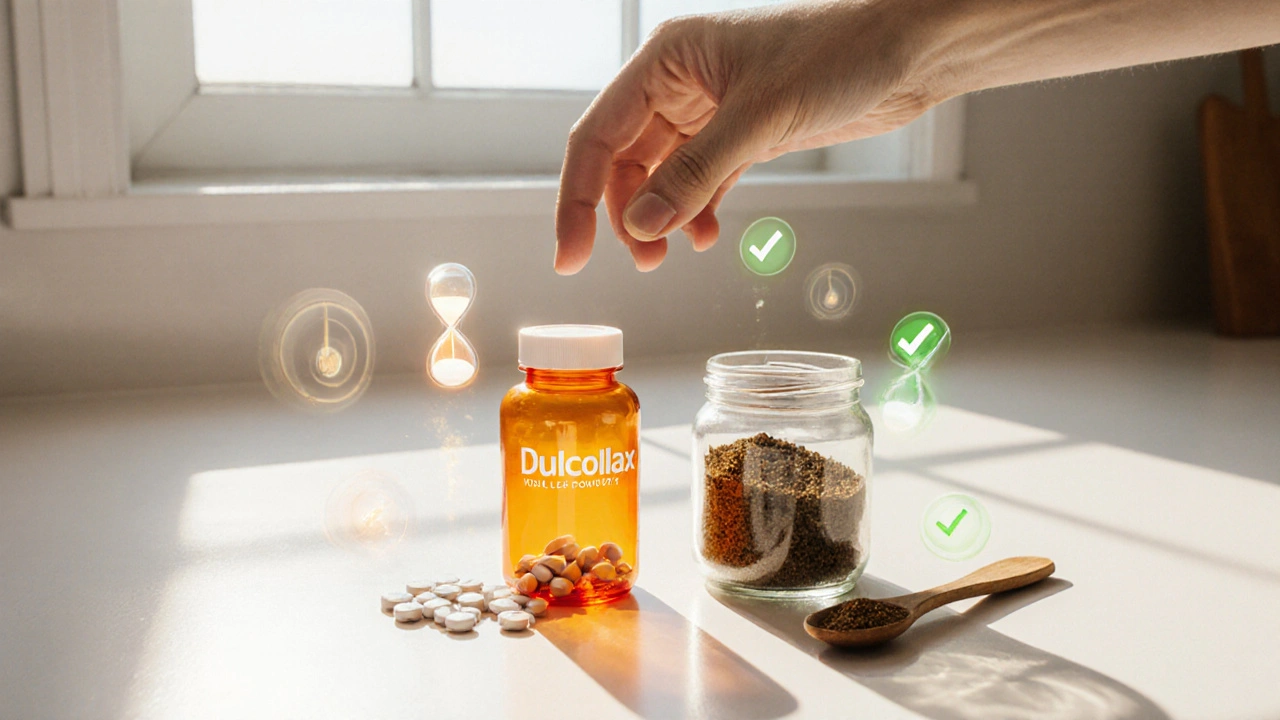When dealing with Constipation Relief, the effort to ease difficulty passing stool and restore regular bowel movements. Also known as bowel regularity, it requires a blend of lifestyle tweaks and safe products. One of the first tools is Dietary Fiber, plant‑based carbs that add bulk and water to stool, which directly encompasses the core of constipation relief. Another key player is Laxatives, medicines or supplements that stimulate bowel activity, a category that influences stool softness and frequency. Finally, Hydration, adequate fluid intake that helps fiber swell and move through the gut is essential because effective constipation relief requires enough water to keep everything flowing.
Why does fiber matter so much? Studies show that increasing both soluble and insoluble fiber can cut constipation episodes by up to 40 %. Soluble fiber, found in oats, apples, and beans, forms a gel that softens stool, while insoluble fiber from whole grains and veggies adds grit that pushes waste along. The trick is to ramp up intake gradually—start with a handful of fruit or a spoonful of bran each day, then add more over a week. Pairing fiber with the right amount of water (about 2 liters for most adults) ensures the bulk doesn’t dry out and become a new blockage.
Laxatives come in several flavors. Bulk‑forming agents (like psyllium) act like extra fiber, while osmotic laxatives (such as polyethylene glycol) draw water into the colon. Stimulant laxatives (like senna) trigger intestinal muscles to contract. Picking the right type depends on how quickly you need relief and whether you prefer a short‑term fix or a long‑run habit. For occasional hiccups, an osmotic option often works fast without the cramping that stronger stimulants can cause. Remember, laxatives are a backup, not a daily habit—relying on them too often can dull your gut’s natural rhythm.
Water is the silent partner in every constipation‑relief plan. Dehydration makes stool hard and difficult to pass, turning a mild slowdown into a full‑blown blockage. Aim for at least eight glasses of water daily, and consider adding a cup of warm herbal tea after meals to stimulate peristalsis. Even simple moves like a short walk after eating can jump‑start the colon’s wave‑like contractions. If you’re sitting at a desk most of the day, set a timer to stand, stretch, or do a quick hallway stroll every hour.
Probiotics are another piece of the puzzle. Good bacteria help break down fiber, produce short‑chain fatty acids, and keep the colon’s lining healthy. Yogurt, kefir, and fermented vegetables are easy sources. When combined with fiber, probiotics create a synergistic effect that improves stool texture and frequency.
Putting all these pieces together—fiber, the right laxative when needed, plenty of water, gentle movement, and a dose of probiotics—gives you a robust, flexible system for constipation relief. Below you’ll find articles that dive deeper into each component, from detailed fiber‑ramp guides to safe ways to purchase generic medications online. Whether you’re looking for quick tips or a longer‑term plan, the collection below has practical advice you can start using today.

A clear, side‑by‑side look at Dulcolax (bisacodyl) and top laxative alternatives, covering effectiveness, speed, safety, cost, and best‑use scenarios.